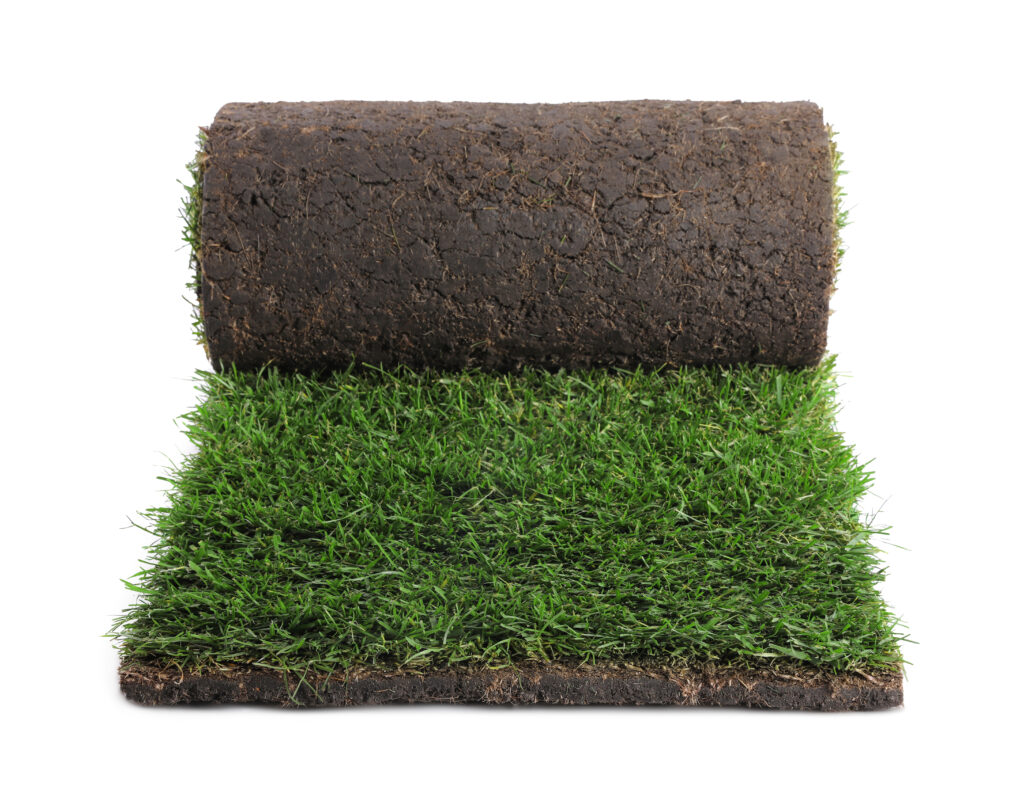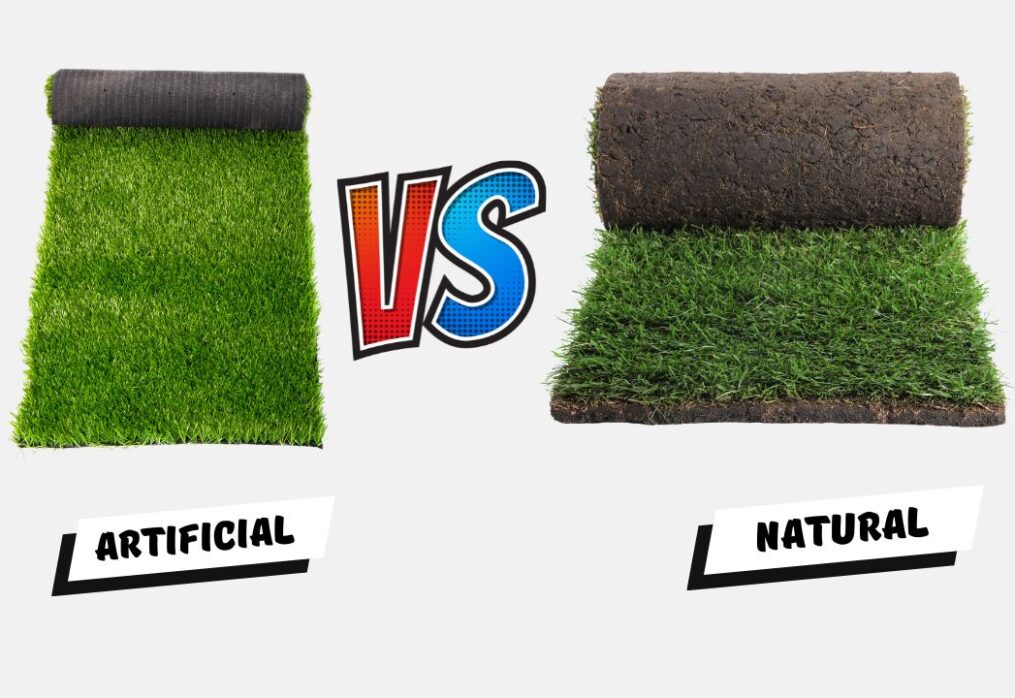Artificial Grass vs Natural Turf: Which is Better?
Choosing between artificial grass and real turf will be one of the most important decisions you will make in designing a lovely, green, and friendly yard. Both choices have special benefits and cons; the decision mostly depends on your demands, way of life, and garden objectives. We’ll explore the primary variations between artificial grass and natural turf in this post, weighing elements including cost, upkeep, environmental impact, appearance, and general usability. This information will enable you to decide which alternative best fits your outdoor area.
Artificial grass vs Natural turf
1. Realist and aesthetic aspects
Look and feel are among the first factors people consider when deciding between artificial grass and natural turf. Real grass has a rich, velvety feel that is indisputable. Underfoot, it feels cold and smells fresh, earthy, as many gardeners enjoy. Natural grass appeals dynamically because of its rich, vivid color, which changes with the seasons. Thanks to technological developments, artificial grass today seems more lifelike than it did years ago. With varied tones of green and brown that reflect the natural look, premium artificial grass can quite resemble natural grass. It does not, however, have the soft, cool feel of actual grass or the inherent diversity. The somewhat synthetic look and feel may turn off some people. Verdict: Natural turf could be your greatest choice if you give an actual feel and natural beauty top importance. Artificial grass could be a good substitute, though, if you want constantly green grass with no effort.
2. Maintenance requirements
Maintenance is another important consideration when deciding between synthetic grass and real turf, as both require varying levels of care. Real grass calls for constant upkeep. This covers mowing, watering, fertilizing, aeration, and handling of illnesses or pests. Maintenance, depending on the variety of grass and environment, may become somewhat time-consuming. Lawns, especially in hot regions, require regular mowing and watering during the growing season. One of artificial grass’s primary selling features is its low-maintenance character. It calls for neither fertilizing, watering, nor mowing. sporadic brushing and rinsing are all you need to keep it looking clean and fresh. It may, however, heat up in direct sunlight and require cooling in quite hot conditions. Artificial grass is the obvious winner if you want a lawn that is low maintenance and simple to care for. Natural grass provides a more classic lawn experience for folks who enjoy gardening and are not bothered about upkeep.
3. Economic concerns
Selecting between artificial grass and natural turf usually depends mostly on cost. Take into account the initial investment and ongoing maintenance. Natural Turf: Compared to synthetic grass, the initial installation cost of natural turf is relatively low. Still, considering water bills, lawnmowers, fertilizers, insecticides, and other maintenance tools and services helps one understand the long-term expenses. Maintaining natural grass over time may prove more expensive than the early savings. Artificial Grass: Installing artificial grass requires a much larger initial outlay. This covers not only the cost of the grass but also the expenses of appropriate installation. Still, over time, the maintenance expenses are negligible. Reduced recurrent costs come from not watering, fertilizing, or mowing. Artificial grass can start to be a reasonably affordable choice over a five- to ten-year span. Verdict: Although artificial grass’s low maintenance needs over time can save money, natural grass is initially more reasonably priced.

4. Environmental Influence
When choosing between artificial grass and real turf, many homeowners increasingly consider the effect on the surroundings. Natural Turf: Absbing carbon dioxide, generating oxygen, and supporting local organisms, including insects and birds, makes a natural lawn beneficial for the surroundings. Natural grass management, on the other hand, sometimes requires pesticides, fertilizers, and large amounts of water, which can harm the environment. Artificial grass: It is environmentally benign in some respects because it does not require fertilizers, herbicides, or water. It is created from synthetic materials, though, and once replaced, landfills could wind up with it. Furthermore, it doesn’t help local ecosystems or aid in air pollution reduction like natural grass does. Verdict: Artificial grass is good if your first concerns are cutting water usage and avoiding chemicals. Natural turf could be a preferable option for those who want natural materials and value helping local ecosystems.

5. Usability and Durability
Particularly for families with children, dogs, or people who frequent events in their garden, durability is a major factor. Natural Turf: In heavily trafficked regions, natural grass can deteriorate rapidly. Brown spots can be brought on by pets, and youngsters playing might result in naked areas. Recovering from damage takes time, so muddy areas may appear following severe rain. Artificial grass: It is quite robust and can withstand a lot of use without degrading. It would be ideal for families with pets and children because it does not leave bald patches or muck. Pets and children would find it unpleasant to play on in peak summer, though, because direct sunlight can get hot. Verdict: artificial grass is more reliable and durable in high-traffic areas. Especially in shady or less-used regions, natural grass is better for a more natural and cooler surface.
Artificial grass vs Natural turf
| Feature | Artificial Grass | Natural Turf |
|---|---|---|
| Appearance | Looks uniform and green all year round; modern varieties closely mimic natural grass. | Offers a more natural and authentic look; varies in color, texture, and thickness. |
| Maintenance | Low maintenance; does not require mowing, watering, or fertilizing. | High maintenance; needs regular mowing, watering, fertilizing, and weeding. |
| Initial Cost | Higher upfront cost; involves purchasing the material and professional installation. | Lower initial cost; involves buying seeds or sod and basic gardening tools. |
| Long-Term Cost | Lower long-term cost due to minimal maintenance and no watering needs. | Higher long-term cost due to ongoing maintenance, watering, and fertilization. |
| Durability | Highly durable; can last up to 15-20 years depending on quality and usage. | Less durable; subject to wear and tear, especially in high-traffic areas. |
| Environmental Impact | Made of synthetic materials; not biodegradable; can retain heat in hot weather. | Eco-friendly; provides oxygen, cools the environment, and supports local ecosystems. |
| Water Usage | No water is required; suitable for drought-prone areas. | Requires regular watering, especially in dry climates, increasing water usage. |
| Safety and Comfort | Can become hot in direct sunlight; and may cause abrasions if fallen on. | Cooler and softer; offers a more comfortable and safer surface for children and pets. |
| Customization | Available in various colors, lengths, and densities to suit aesthetic needs. | Limited customization; choice is dependent on grass species and growing conditions. |
| Installation Time | Quick installation; typically completed within a few days. | Longer installation; sod needs to establish roots, or seeds need time to grow. |
| Pet-Friendliness | Easy to clean and maintain; some types have antimicrobial properties. | Can develop bare patches or mud; requires more care to maintain cleanliness. |
| Allergen Control | Hypoallergenic; does not produce pollen, making it ideal for allergy sufferers. | Can produce pollen and attract insects, which may cause allergies for some people. |
In essence, which is better?
Your priorities will eventually determine which of artificial grass and natural turf you choose. Artificial grass can be the best fit for you if you like a low-maintenance, durable, reasonably priced solution. For busy homeowners who still want a green lawn without the work, it’s ideal. On the other hand, natural grass is best for its aesthetic, environmental, and sensory advantages if you value its natural look and feel and are willing to invest time and effort in its maintenance. Make your choice keeping in mind your particular requirements, income, and way of life. Whichever you choose, a properly cared-for lawn can turn your outside area into a lovely, green haven. I hope you enjoy reading this post – artificial grass vs natural turf I recommend checking out:
- How to plant lawn grass: A Quick Guide
- Mowing Heights By Season And Grass Type
- What Is the Best Warm Season Grass for Your Lawn
- Natural Weed and Grass Killer Recipe for a Chemical-Free Lawn
- What type of machine is used to cut grass?
- 5 gorgeous flowering plants to bring home in summer
- 10 Stress Relieving Indoor plants for home
- 10 plants you can easily grow in a bottle
- 5 Easy Tips to Maintain a Tulsi Plant at Home
- 5 Medicinal Plants to Grow at Home
- 10 palm plants to grow at home
Last Updated on 1 year ago by Anjali Mehra Ph.D. in Horticulture (Punjab Agricultural University)
- Grass Types that Survive Frost & Snow (Uttarakhand-Specific) - December 6, 2025
- Low-Water Grass Varieties for Hilly Homes in Uttarakhand - December 1, 2025
- Mexican Grass vs Bermuda Grass – Which is Best for Indian Lawns? - November 28, 2025
